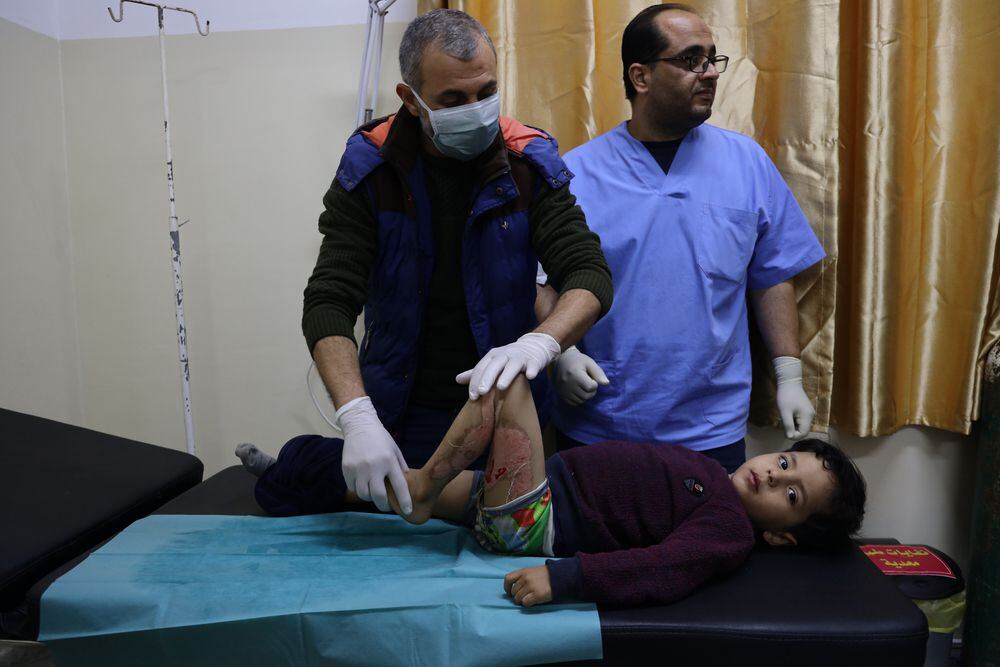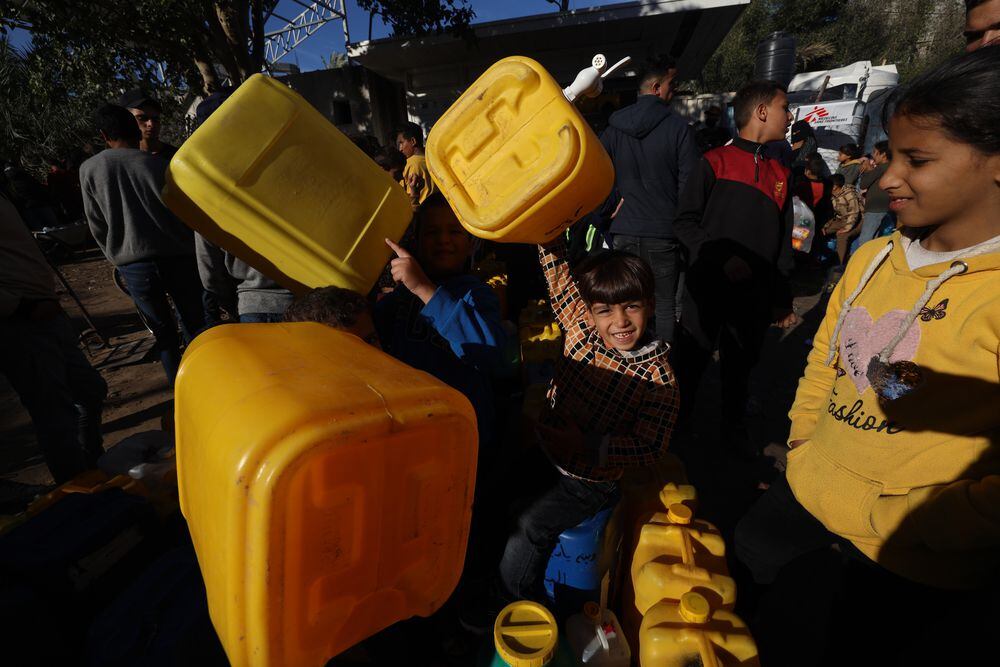:quality(75)/cloudfront-us-east-1.images.arcpublishing.com/elcomercio/FNDXOQ6COFGB3MWK444Q6OLRYQ.jpg)
Dr. Aldo Rodríguez, Mexican surgeon from Doctors Without Borders (MSF)describes the alarming despair he witnessed in Link By providing urgent care to victims of attacks, including children orphaned by violence, this is your testimony:
“After waiting a month Egypton November 14th I entered Link as part of a team of experts MSF. We found scenes of total despair. Civilians arrested. No fuel, no food, no water. There are no ambulances. Attacks on hospitals are a fact. And people are increasingly desperate.
LOOK: UN expert says Israel does not respect international law due to “very illegal” acts
My first hours in Gaza were marked by the constant noise of the drones that Israel uses to monitor the enclave. The shrill sound is heard non-stop, throughout the day and even at night. I also saw buildings collapse and others completely collapse. Although he knew in advance the terrible conditions in Gaza, It’s shocking to see everything in ruinspeople looking for food under the rubble, endless queues to get bread. There is no place in Gaza without a destroyed building.
Prepared to provide all possible medical support, the team began working on the Khan Yunis Nasser Hospital. That moment, Nasser became the largest operating hospital in Gaza following the incessant attacks on Al Shifa Hospital in Gaza City., in the north of the enclave. But He had twice as many patients as he could care for.and people were setting up tents to protect themselves from air raids and bombings in other places. Some patients were left homeless and they have nowhere to go after they are discharged. Many are trapped in hospitalwhere it is at least warm and there is drinking water.
On the third day, a missile fell on a refugee camp located less than a kilometer from the hospital.. We felt the building shake and the windows creak. Within 10 minutes the ambulances started to arrive. Instead of seeing children playing or resting, what you see is heartbreaking: children with amputations, women with serious burns.. They arrive in very bad condition and we have to do intensive therapy.
LOOK: “We disinfect wounds with vinegar”: this is how medical teams work in Gaza hospitals
A week later, after treating as many patients as possible, the team moved to the Al-Aqsa Hospital, in the central area of Linkwhere there was also intense bombardment. Under normal circumstances it has around 200 beds, but due to the high number of patients, the hospital had to create an additional 450. There, our team supported triage – the process of identifying patients based on the severity of their condition – and conducted consultations and surgeries, managed wound care, and provided physical therapy and mental health care to patients with trauma-related injuries. war.
On January 6th, however, we had to withdraw our team from Al-Aqsa after the area received evacuation orders from the Israeli army. Before the evacuation, drones and snipers injured relatives of our people, a bullet entered the intensive care unit and the intense fighting, increasingly closer to the hospitalprevented employees from accessing the facilities. MSF urged Israeli forces to protect patients and staff who continue to work and receive treatment inside the hospital. On January 7, a drone attacked the administrative building of the hospital and several people who were in his courtyard. On January 10, 40 people were killed and more than 150 were injured in air strikes on buildings located at the entrance to Al Aqsa Hospital.
Al Aqsa remains the only partially functional hospital in the central area of Link and serves the large community of Deir Al Balah, including several refugee camps.

It is not easy to move within Gaza, not even to go to work. The morning we moved into the central area, two Israeli tanks blocked the main road and divided the south of Link in two parts. Many people were trapped where they live or work, without access to food and other supplies on the other side. The only way to cross was by a road close to the beach, but without a car or gas, people were stuck. And we’ve all had to deal with frequent telecommunications outages.
In the central area, drones and bombings were present 24 hours a day. Every day, two or three times a day, bombs fell not far away, followed by an avalanche of injured or dead arriving at the already overcrowded hospital. The attacks were very strong and those affected arrived with severe brain trauma, unconscious and without legs or arms. Many patients faced the loss of close family members. or your home, in addition to the physical pain.
Some of my hardest moments in Link They happened during the 20 or 25 surgical interventions he performed every day. I have had very young patients who were the only survivors in the family and arrived at the hospital alone. I had cases of children aged 1 and 2, victims of bombings, with traumatic amputations of their legs, at the level of the groin. Due to the high number of children arriving without family, we started using the English acronym WCNSF, which means ‘injured child, no surviving family’.

Every day I saw these children alone and devastated. Some said they were playing just before they were attacked. After the amputation, they remain depressed, unwilling to talk. It’s a dramatic situation because it’s not just about the surgery, but everything that comes after. Even if they are discharged, they stick around because they don’t know what to do and they have nowhere to go. They may be better physically, but mentally they are devastated.
Before I left, the people I met Link They asked me to share what I saw and did during my time there and the pain they suffered. They want people around the world to know what is happening to the Palestinians in Gaza and what they are going through. I saw with my own eyes the painful consequences of three months after this terrible war. Every day more lives are lost and human despair worsens. “This siege and indiscriminate violence must end now.”
*Dr. Aldo Rodríguez is originally from Mexico and began working as a surgeon at Doctors Without Borders in 2018. Before heading to Gaza in November, he worked with the organization in Khartoum, Sudan, where intense fighting has displaced millions of people since April 2023. Also worked in other countries suffering from acute violence and forgotten crises, such as the Democratic Republic of Congo (DRC), Burundi and Yemen.
Source: Elcomercio
I am Jack Morton and I work in 24 News Recorder. I mostly cover world news and I have also authored 24 news recorder. I find this work highly interesting and it allows me to keep up with current events happening around the world.






